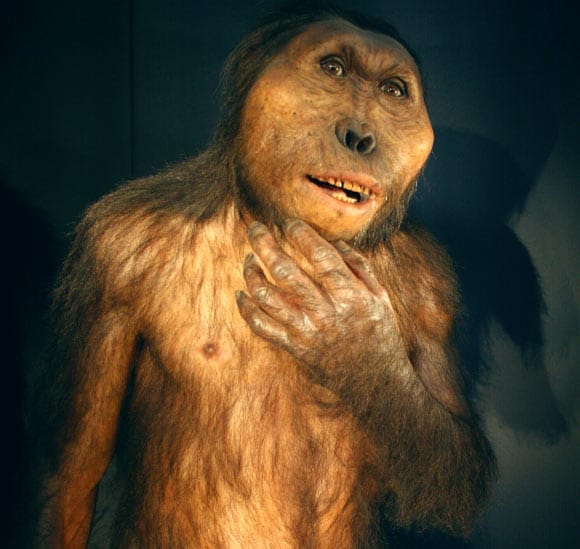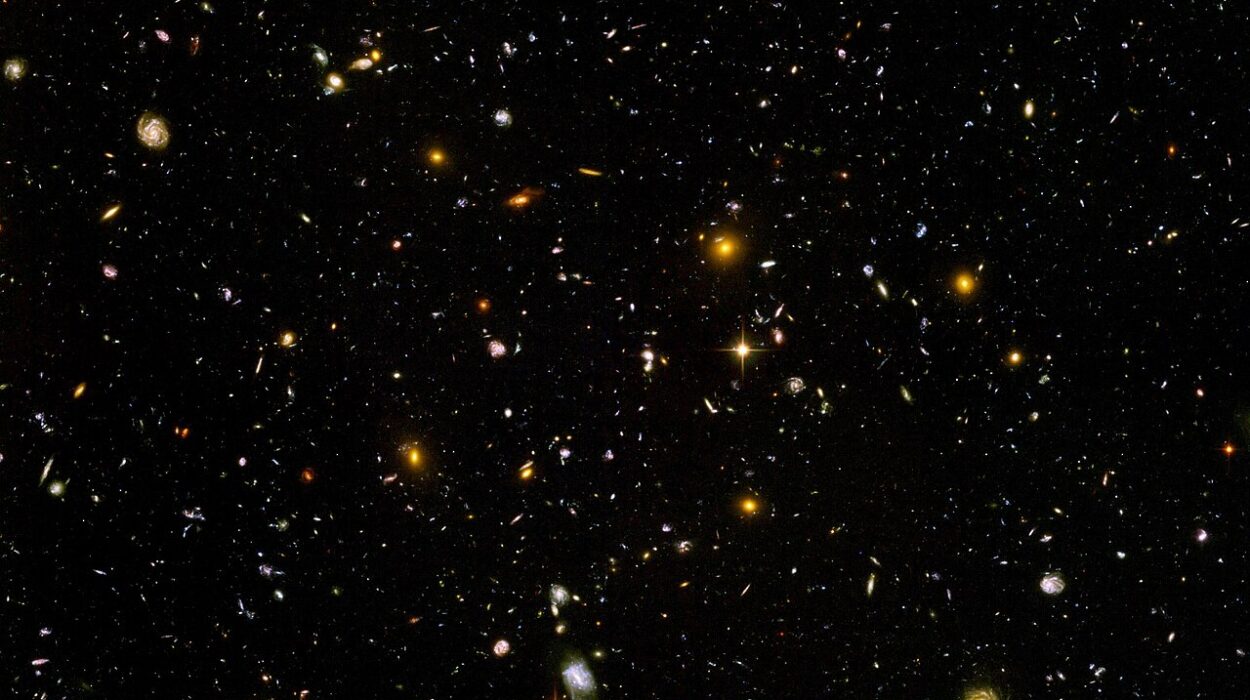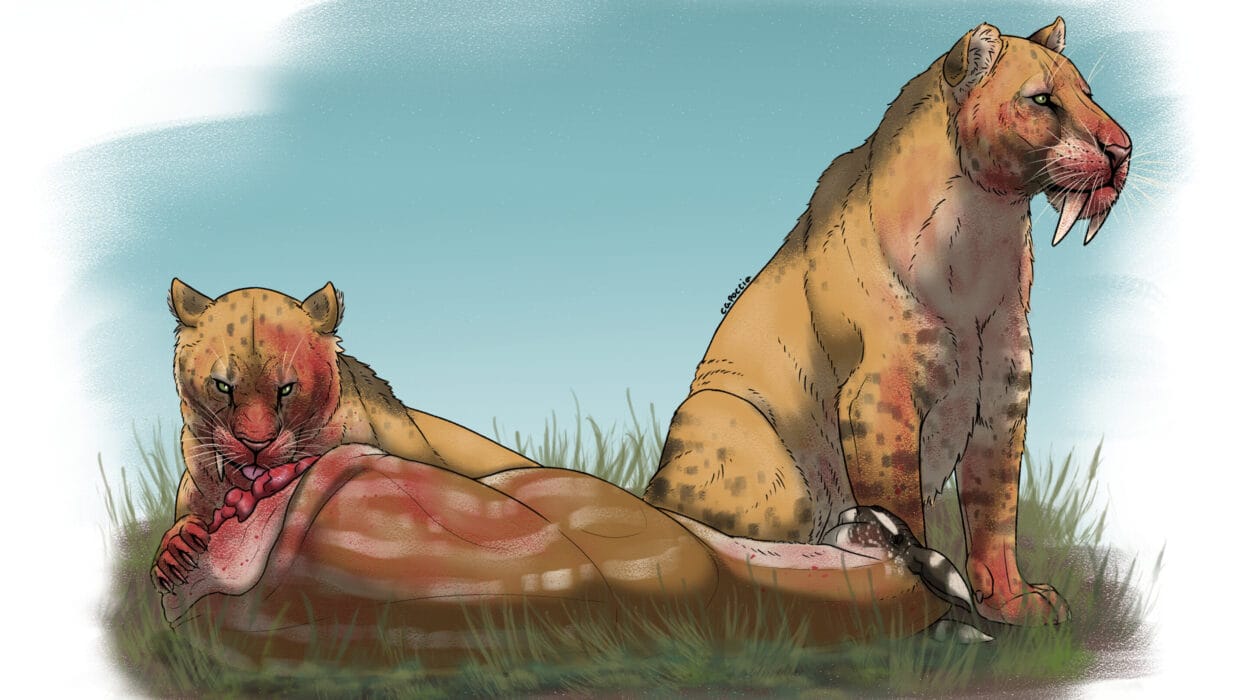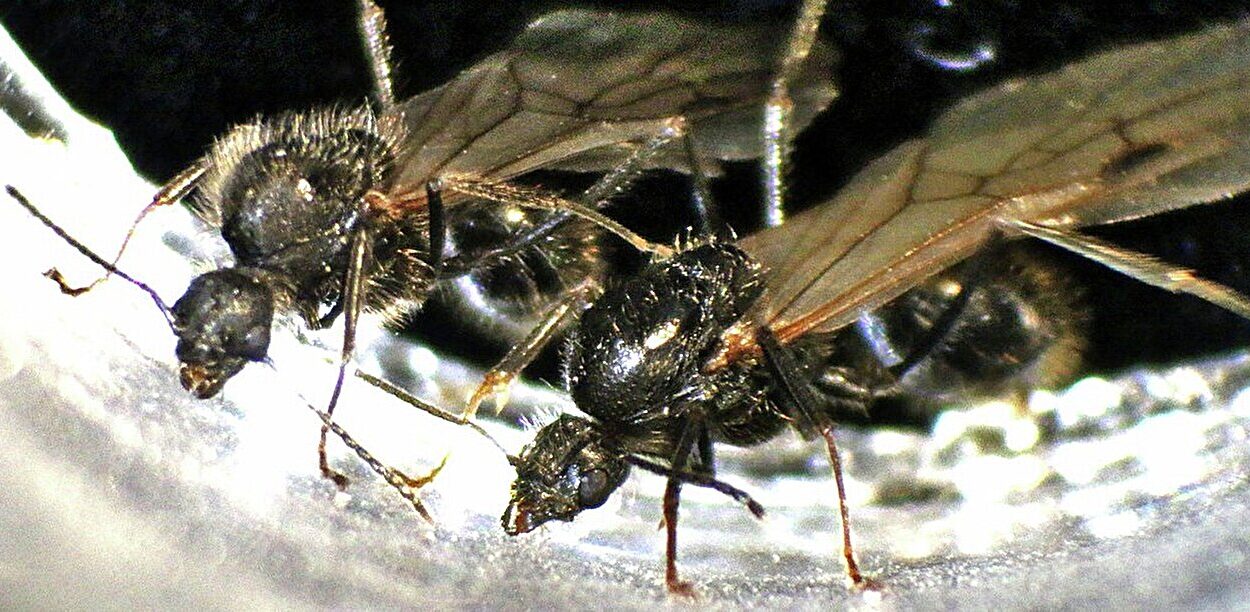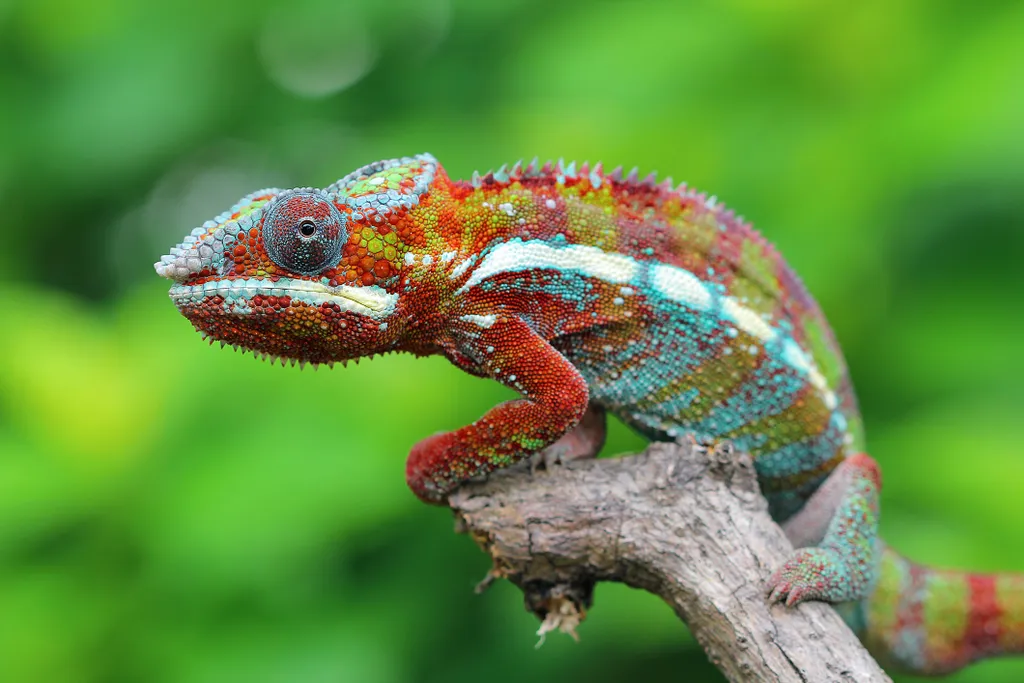It’s one of the most quietly astonishing facts about us. Stand a human being next to a chimpanzee, gorilla, or orangutan, and one feature will leap out more than any other—not the brain, not the posture, not even the opposable thumbs. It’s the skin. Smooth, exposed, fragile. Unlike our closest primate relatives, humans are almost completely hairless, with skin that blushes, burns, and sweats in the sun.
How did this happen?
The mystery of human hairlessness is not just a quirk of anatomy. It is a deep evolutionary puzzle, tied to our survival, behavior, and identity. Why would evolution strip us of the protective fur that other mammals—especially our primate cousins—so clearly depend on? How did the naked ape come to be? The journey to understanding this transformation takes us millions of years into the past, through sweltering African savannas, through the minds of ancient hominins under a blazing sun, and into the very mechanisms that shaped our species.
This is the story of how humans lost their fur—and what we gained along the way.
The Primate Coat: Our Hairy Ancestors
To understand what changed, we must begin with what was. All mammals have hair or fur. It’s one of the defining characteristics of the group. Even dolphins and whales, though nearly hairless today, still grow a few hairs as embryos. Hair originally evolved not for display, but for survival. It retained heat, protected skin from injury and parasites, and offered sensory feedback. For early mammals, a coat of fur was essential armor in a dangerous, fluctuating world.
Primates evolved within this mammalian blueprint, and they kept the fur. Our closest relatives—chimpanzees, bonobos, gorillas—are covered head to toe in dense body hair. Early hominins almost certainly were too. The last common ancestor between humans and chimpanzees, which lived around 6 to 7 million years ago, would have had a thick coat like any modern ape.
So what changed?
Something must have driven an evolutionary pressure strong enough to overcome the advantages of fur. Hairlessness in mammals is rare and usually associated with aquatic species. Yet humans remained terrestrial. That makes our transformation unique—a mammal that stayed on land but shed its fur.
The Furnace of the Savanna
One of the most powerful theories for why humans lost their fur is rooted not in biology alone, but in climate.
Around 2 to 3 million years ago, Africa’s environment began to shift. Forests gave way to open savannas. Rainfall patterns changed, and with them, the landscape that early hominins had called home for millions of years. As tree cover diminished, early human ancestors found themselves spending more time in the open sun—hunting, foraging, and walking longer distances than ever before.
With the loss of shade came a new evolutionary challenge: heat.
Unlike forests, savannas offered little respite from the sun. In this hot, open environment, overheating became a serious threat. Core body temperatures that rise even a few degrees too high can lead to heat stroke and death. Fur, which had once helped keep primates warm in the forest, now trapped heat dangerously.
At the same time, movement became more important. Early Homo species, like Homo erectus, began walking farther and running longer. Persistence hunting—a technique where prey is chased to exhaustion—was born in this era. But running under the blazing sun demanded a cooling system more efficient than any other in the animal kingdom.
The solution? Lose the fur. Gain the sweat.
The Great Sweating Machine
Humans are the world’s most prolific sweaters. It’s not exactly a glamorous superpower, but it is revolutionary. Our skin is covered with between 2 and 5 million eccrine sweat glands—far more than any other mammal. These glands produce a thin, watery sweat that evaporates rapidly, pulling heat away from the body and cooling the blood beneath the skin.
But sweat is only effective when it can evaporate. Fur blocks that process. A thick coat of hair traps moisture and slows evaporation, turning sweat into a damp mess. Stripping the fur allows the skin to breathe and sweat to do its work.
This transformation into a “sweating machine” gave humans a profound advantage. It allowed us to move in the midday sun, when most predators and prey were inactive. We could travel farther, hunt longer, and remain active during the hottest parts of the day. No other animal could run for hours under the African sun without overheating.
But this new thermoregulatory system came at a cost. Without fur, our skin was vulnerable—to sunburn, injury, and parasites. That raises a critical question: Why didn’t evolution find a compromise? Why not just thin the hair, rather than remove it almost entirely?
The answer may lie in the trade-offs—and in the growing importance of social, sexual, and cognitive factors in our evolution.
Skin as Canvas: Color, Touch, and Communication
With the loss of fur, our skin was no longer hidden. It became a visible, expressive organ. And that changed everything.
First, there was pigmentation. As fur disappeared, the skin underneath needed protection. Early humans living under intense UV radiation evolved more melanin in their skin—leading to the emergence of darkly pigmented skin as a natural sunscreen. This adaptation protected against folate degradation, DNA damage, and skin cancers, which would have threatened reproductive success.
But skin did more than protect—it also became a canvas for connection.
Human skin is incredibly sensitive. Our sense of touch is among the most refined in the animal world. With fur gone, skin-to-skin contact became more intimate and communicative. Touch played a deeper role in bonding—between mothers and infants, between lovers, between members of a tribe. The naked skin spoke in sensations.
Some scientists also believe that bare skin allowed humans to evolve more sophisticated nonverbal communication. The blush of embarrassment, the pallor of fear, the flush of anger—all became readable emotions. Fur might have hidden these cues. Without it, we became emotionally legible.
This emotional transparency may have further strengthened social bonds—especially in an increasingly complex and cooperative species. Hairlessness may have started as a thermoregulatory solution, but it became a social asset.
The Parasite Problem: A Cleaner Solution
Another compelling reason for the loss of body hair may come from an unexpected place: lice.
Fur is a haven for parasites. Ticks, fleas, and lice thrive in dense hair. For early humans living in warm climates, the threat of infestation could mean more than discomfort—it could bring disease. In group-living animals, parasites spread easily. The less fur, the fewer hiding places for bugs.
Hairlessness may have evolved as a hygienic advantage, especially in social species where grooming plays a role in bonding. With less fur to clean, humans may have saved time and energy, and spent less effort picking through each other’s hair for pests.
This theory is supported by genetic studies on lice. Human head lice and pubic lice are genetically distinct and appear to have diverged around 3 to 4 million years ago. This suggests that by then, our ancestors had already lost most of their body hair, retaining denser patches only in select areas—like the head and groin. These remaining tufts may have served specific functions: protecting vulnerable areas, aiding in scent dispersal, or even playing roles in sexual attraction.
Sexual Selection: The Allure of Nakedness
Evolution is not driven only by survival. It is also driven by reproduction.
Charles Darwin himself speculated that human hairlessness might have evolved partly through sexual selection. If early hominins began to prefer less hairy mates—perhaps associating smooth skin with health, youth, or cleanliness—then those preferences would shape future generations. Over time, such aesthetic biases could exaggerate the trait, leading to the nearly hairless humans we see today.
Though speculative, this idea gains weight when considered alongside human diversity. Different cultures have developed varying attitudes toward body hair, but the general human tendency toward smoothness—particularly among females—has deep evolutionary roots. If hairlessness signaled sexual maturity, fertility, or reduced parasite load, it may have become a desirable trait.
And once a preference exists in a species, it can reinforce itself. Preferences drive behavior. Behavior influences mating. Mating shapes evolution.
Why We Still Have Hair in Some Places
Despite our general hairlessness, humans are not truly naked. We still grow hair in very specific regions: on the scalp, eyebrows, eyelashes, armpits, pubic area, and, to a lesser extent, across the limbs and torso. Why did we keep these patches?
Each region seems to serve a purpose.
Scalp hair protects the brain from solar radiation and helps with thermoregulation of the head, especially in the sun-exposed savanna. Eyelashes and eyebrows keep dust and sweat out of our eyes, and also play roles in facial expression.
Pubic and armpit hair appear at puberty and are associated with scent glands. These hairs help trap and disperse pheromones, which may influence sexual attraction and mate selection. These areas also signal sexual maturity visually.
The fine body hair that remains—vellus hair—is almost invisible, but it still plays a role in sensation. It enhances our awareness of air movement and touch, warning us of tiny changes in our environment.
Hairless Yet Human: The Cultural Reinvention of the Body
Hairlessness did not stop evolving at the level of genes. It continued through culture.
Humans are the only species that grooms its body hair by choice. We shave, wax, pluck, braid, dye, and cut. We have turned our remaining hair into symbols—of identity, status, religion, rebellion. In doing so, we’ve made our hairlessness not just a biological trait, but a cultural canvas.
In many societies, hairlessness has been idealized—associated with youth, beauty, and hygiene. In others, it is treated as unnatural or taboo. The meanings we attach to body hair are layered with history, gender norms, class, and power.
But beneath the cultural interpretations lies a truth that connects us all: our bodies, stripped of fur, reveal our shared story. A story of survival in the sun, of sweat and endurance, of intimacy and touch. We are hairless because we ran, we suffered heat, we loved, we evolved.
Conclusion: The Price and Power of Naked Skin
In losing our fur, we gained more than bare skin. We gained a new relationship with our environment—and with each other.
We became the animal that runs in the midday sun. The one that sweats, not pants. The one that touches, kisses, and holds. The one whose skin reveals emotion, age, illness, and love. We became the animal that transformed vulnerability into strength.
The journey from a hairy primate to a nearly hairless human is not a story of loss—it is a story of adaptation, innovation, and survival. Our skin tells the tale, etched in sweat and sunlight, in scars and sensation.
So the next time you look in the mirror and see bare skin, remember: you are looking at the result of millions of years of evolution. A legacy written not in stone, but in the quiet strength of the human body—naked, resilient, and alive.
